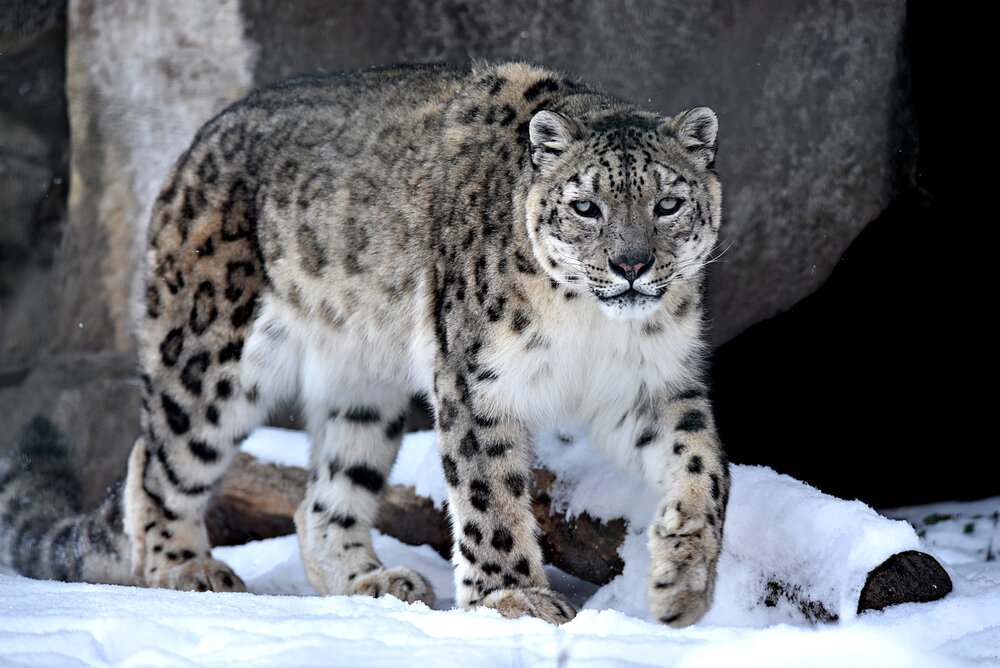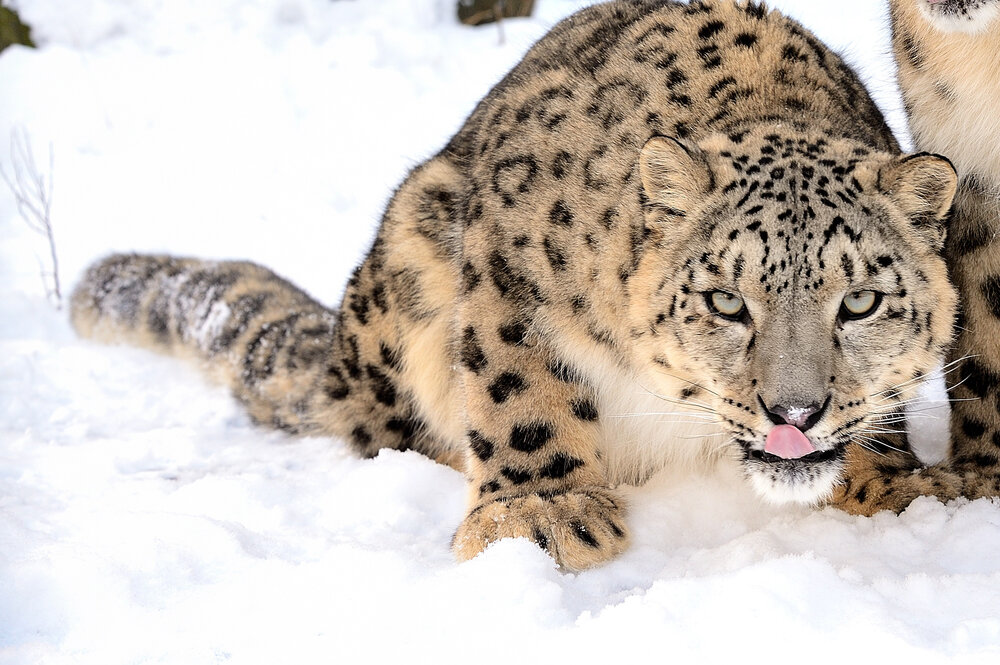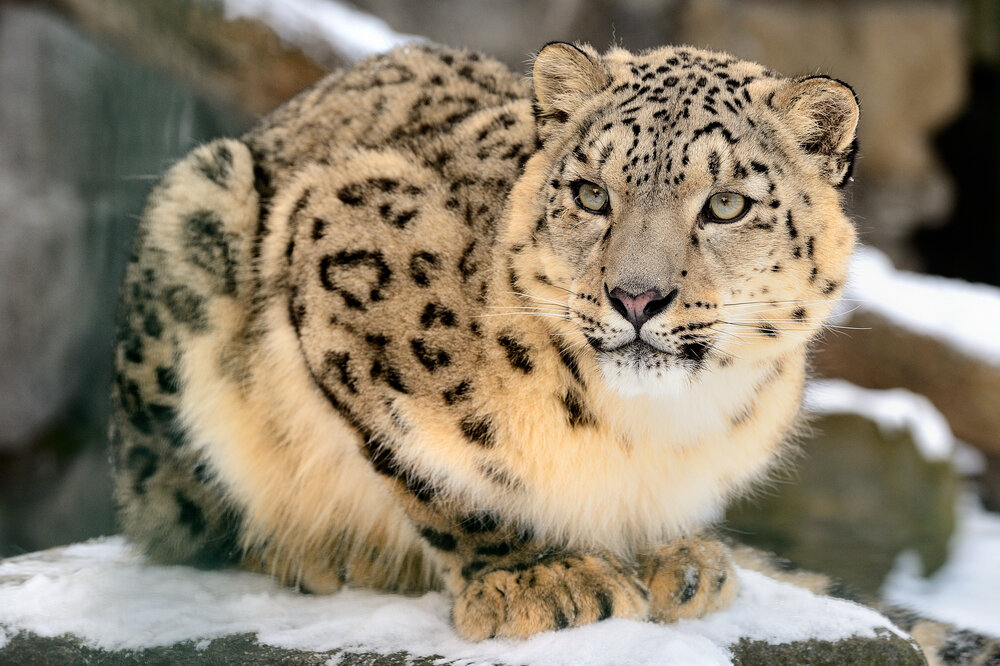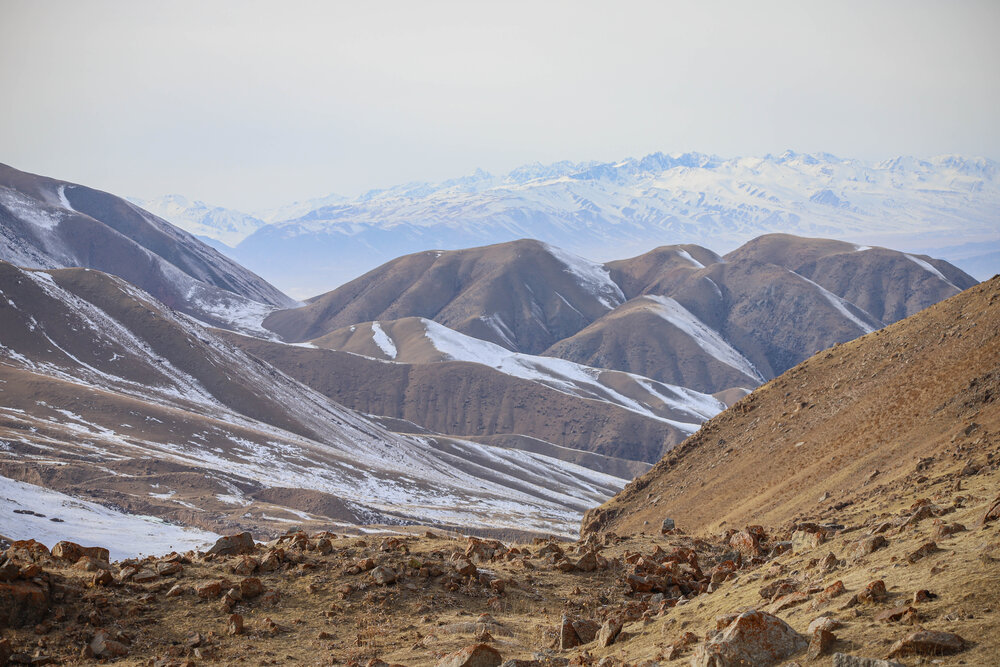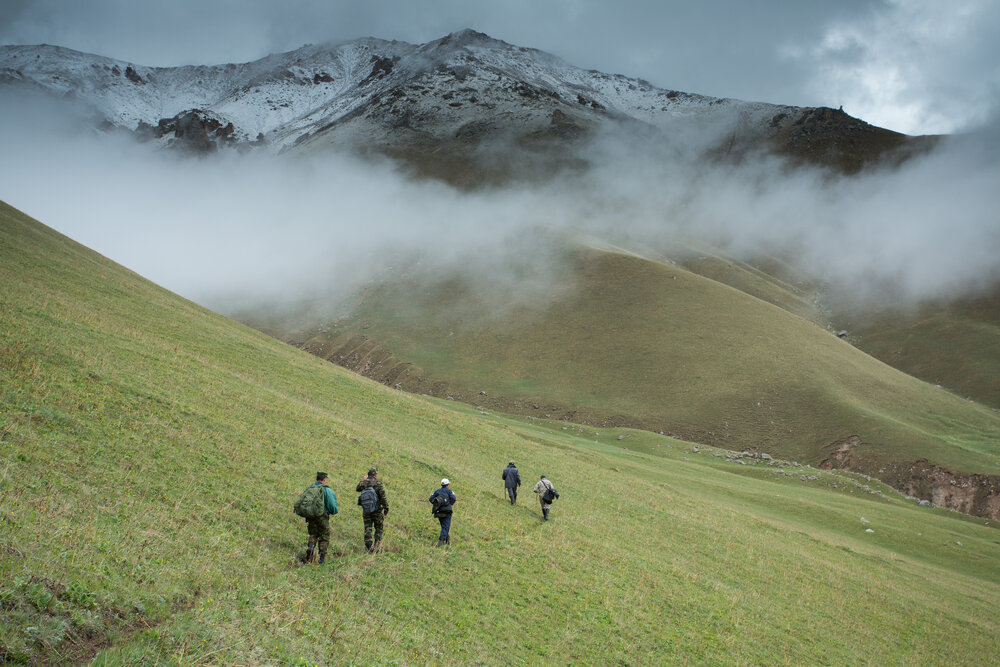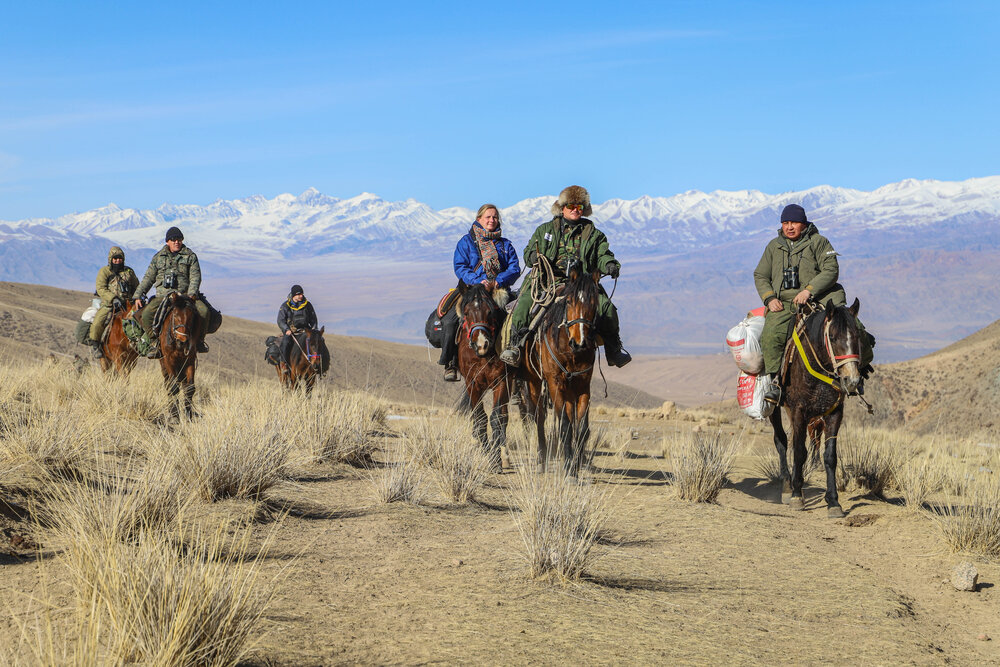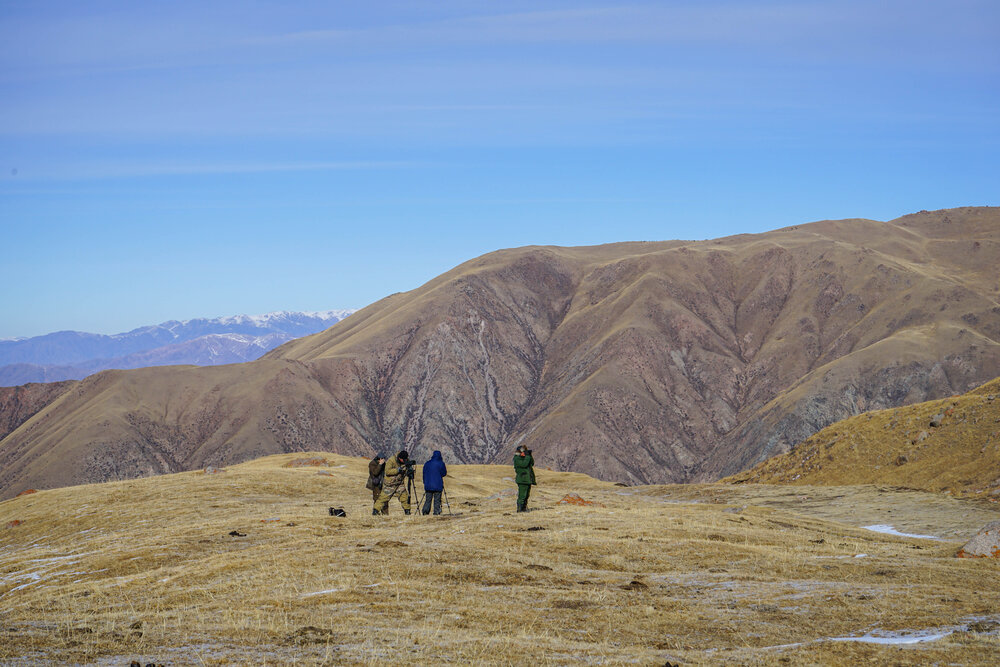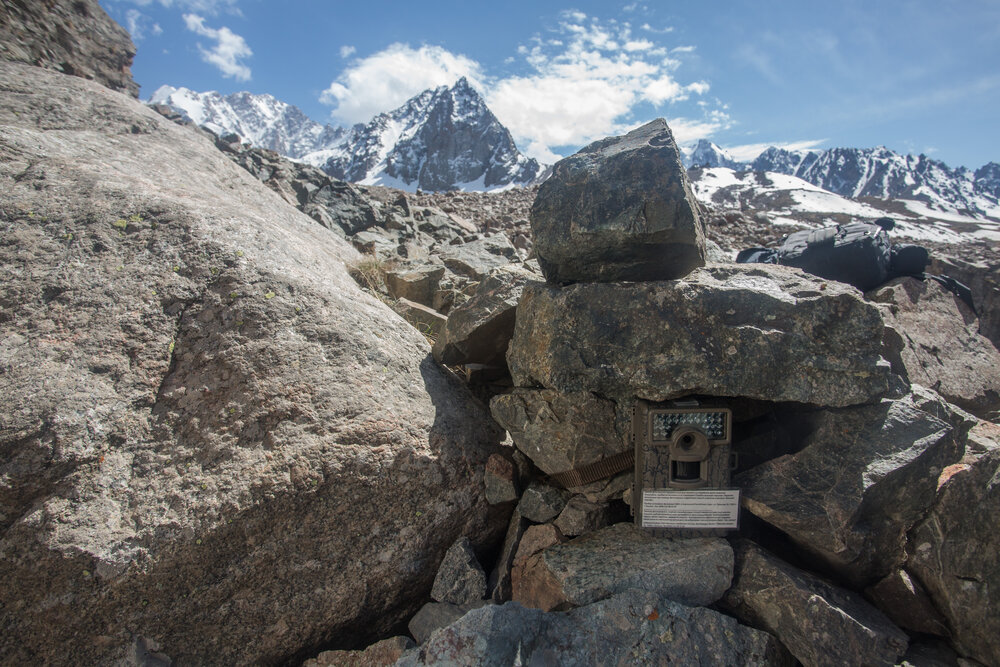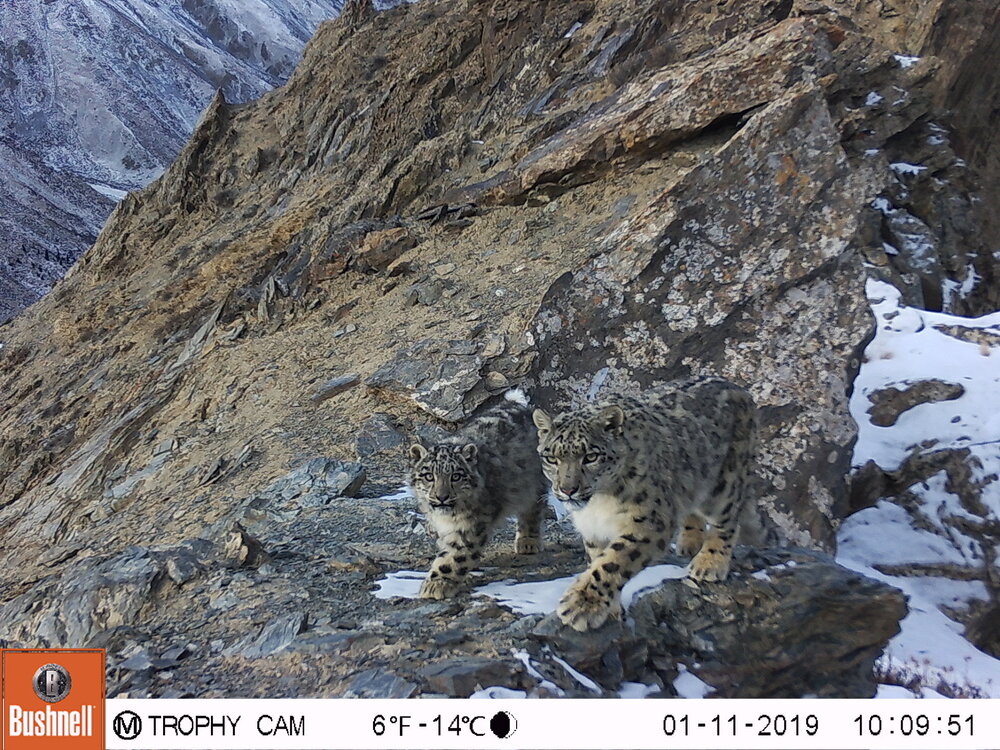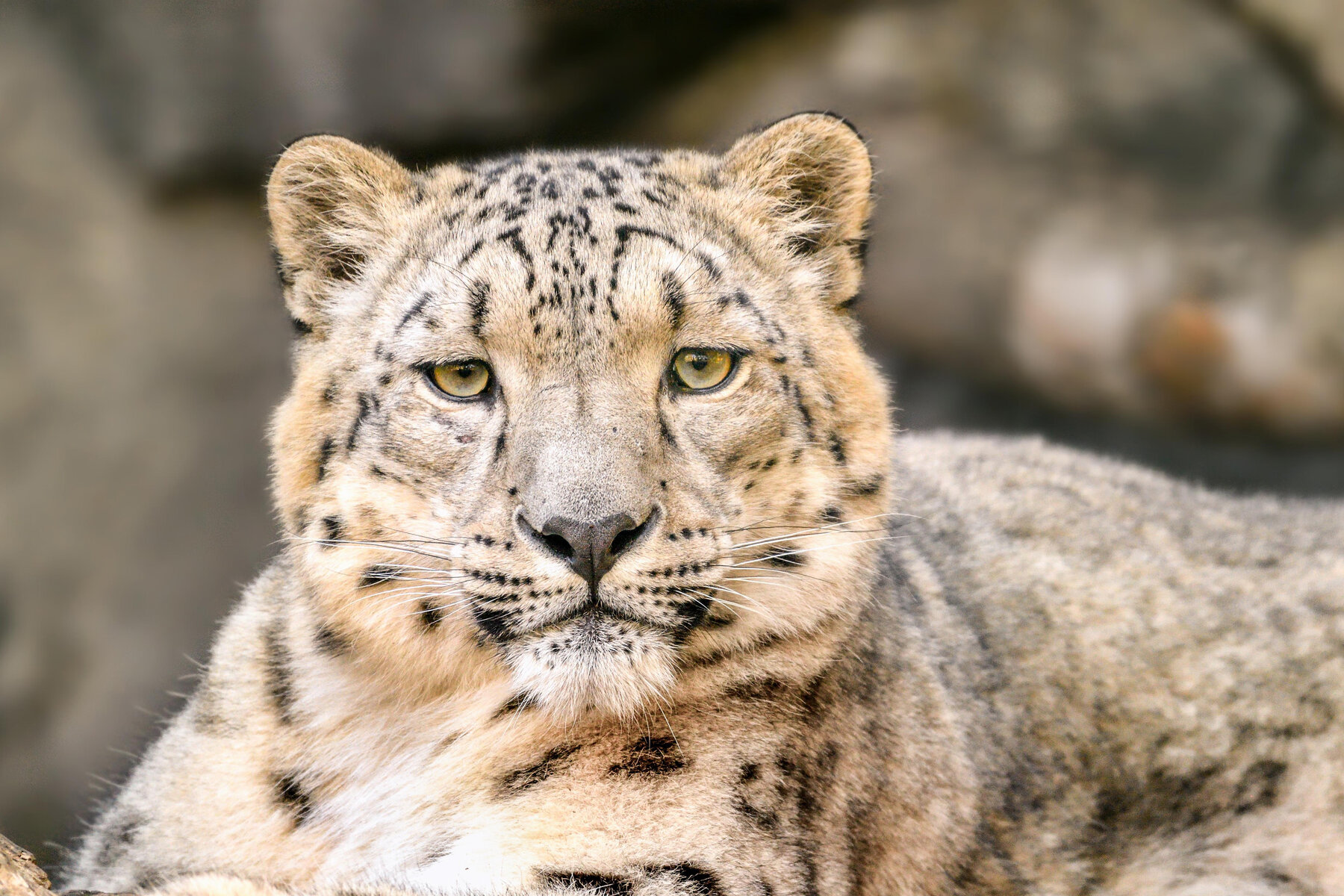
Snow leopard
Berlin’s zoos are supporting snow leopard conservation measures in Kyrgyzstan.
Project facts
- Project name
NABU
- Species
Snow leopard (Panthera uncia)
- IUCN threatened status
Vulnerable (VU)
- Project location
Jalal-Abad region, the Tien Shan and Pamir mountains, Kyrgyzstan
- Greatest threats
Poaching, loss of habitat
- Response
Deploying anti-poaching units, monitoring the leopard population, protecting their habitat, educating local people
Threat Categories of IUCN


Snow leopards in Berlin
Snow leopards came to Berlin for the first time in 1970, when they moved into the Predator House – now the Empire of Cats – at Zoo Berlin. The big cats have also been permanent residents and visitor favourites at Tierpark Berlin since 1998. In 2022, they moved into the Tierpark’s new Himalayan habitat. To date, just under 20 snow leopard cubs have been born in Berlin.
At home in the mountains
Snow leopards live in the mountains of Central Asia. Their range extends from Russia across Mongolia into China and India. They can also be found in Nepal and Kyrgyzstan. These timid cats favour habitats with cliffs, rocky outcrops and ravines. This gives them plenty of places to hide, while also providing a clear view of their prey, which mainly consists of Himalayan blue sheep, ibexes and Marco Polo sheep.
The "ghost of the mountains"
The elusive snow leopard is one of the least studied big cats. They are solitary animals, coming together solely to mate. The females usually raise two to three cubs on their own, high up in the mountains for added protection. At the age of about 18 months, the adolescent cats leave their mothers and strike out alone. The latest studies from 2020 estimate the wild population of snow leopards at around 4,000 to 6,000 individuals.
The threat from humans
Habitat destruction and the associated decline in prey is gradually pushing the snow leopard to the brink of extinction. In addition, humans are encroaching further into their territories. Goatherds, for example, are leading their animals deeper into snow leopard habitats in search of new grazing areas. As a result, domestic goats sometimes end up as prey. Since the loss of even one goat is a disaster for the herders, they occasionally kill snow leopards to protect their herds and livelihood. Reports show that in the period from 2008 to 2016, around 220 to 450 of these cats were killed or illegally traded each year.
Mediating between humans and animals
NABU has been working to protect the snow leopard and its habitat in Kyrgyzstan since 1999. The anti-poaching unit Gruppa Bars is active in the north of the country, working to prevent poaching, educate local people about nature and environmental protection in their region, and monitor the snow leopards that live there. And Gruppa Bars’ efforts are paying off: to date, it has assisted in the arrest of 340 poachers and traders, and in the confiscation of significant numbers of pelts, traps and weapons. Today, far fewer injured or killed animals are found in the country and fur sales have declined. Gruppa Bars is also in close contact with the local people and has been able to promote greater acceptance of the snow leopard.
Expanding the fieldwork
Zoo and Tierpark Berlin are supporting the creation of a second Gruppa Bars unit in the south of Kyrgyzstan. Soon, camera traps will also be set up in this part of the country to establish a nationwide snow leopard monitoring programme. In the long term, these efforts should result in a decline in poaching and illegal wildlife trafficking.
Photos: © NABU/Tolkunbek Asykolov, Klemens Karkow, Ivan Tymofeiev
